

MOLLUSCS
SLUGS
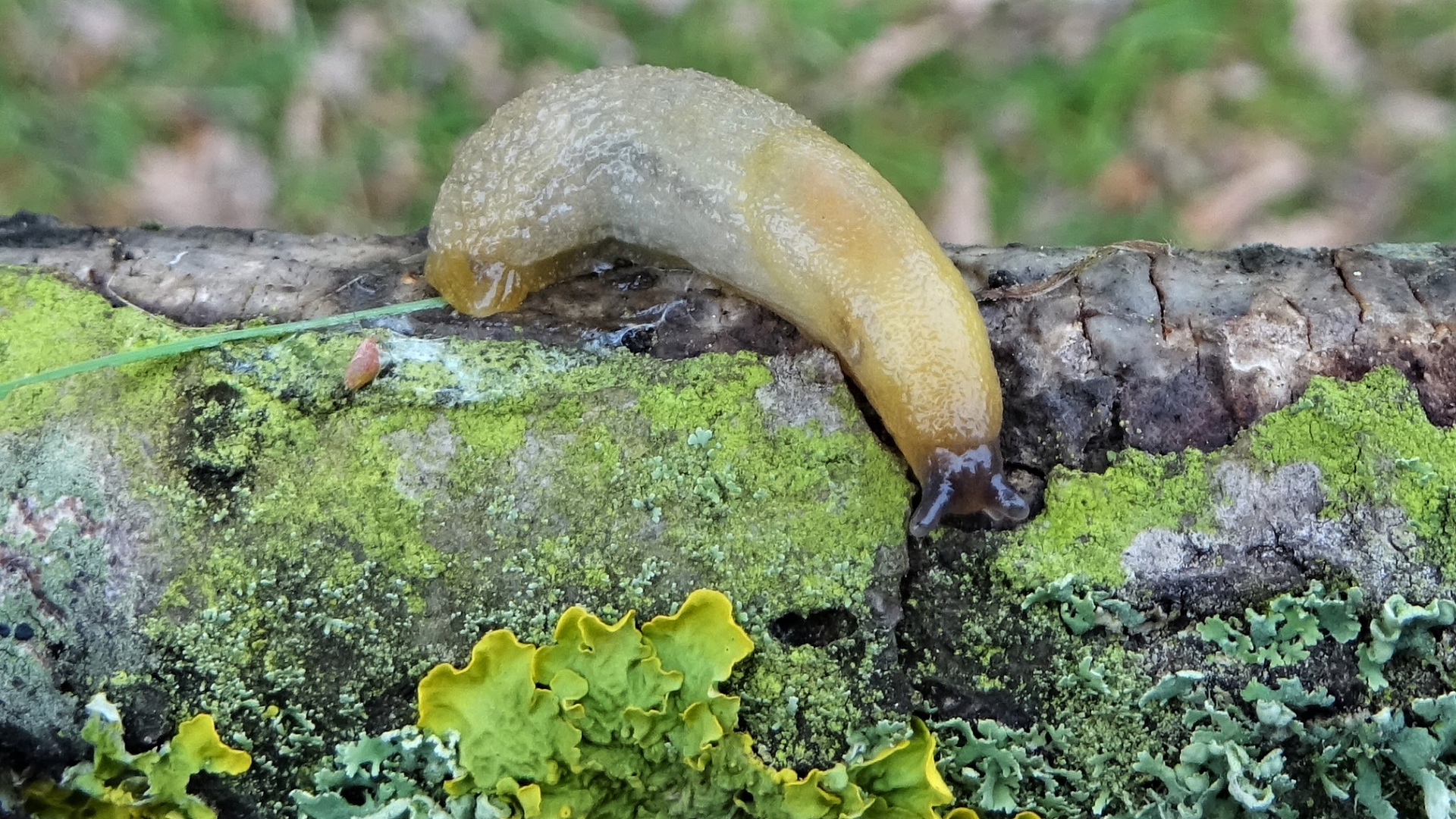
Slide title
Hedgehog Slug Arion intermedius
©Raymond Small TQ4792 09/11/2017
Button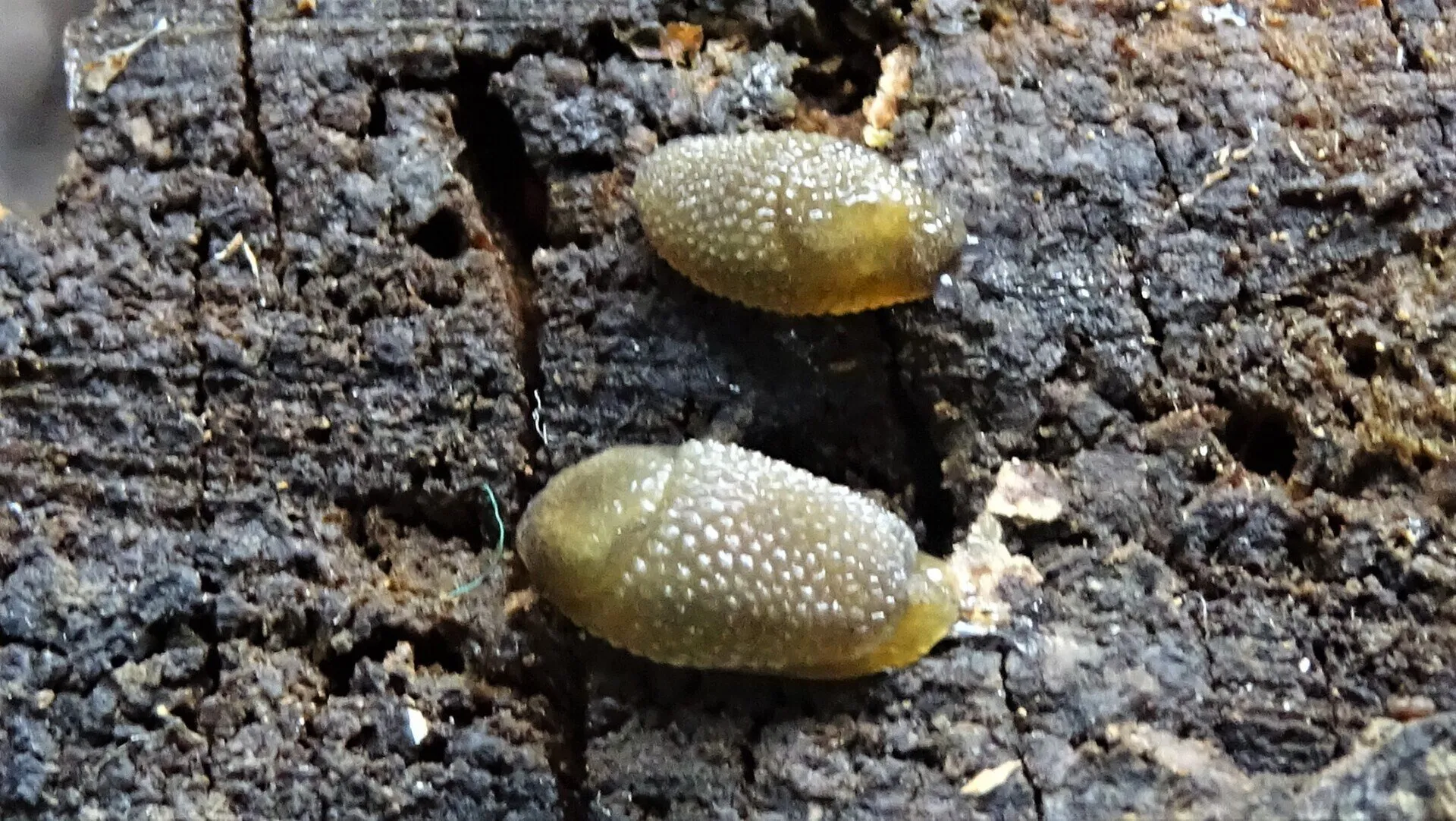
Slide title
Hedgehog Slug Arion intermedius
©Raymond Small TQ4793 05/05/2019
Button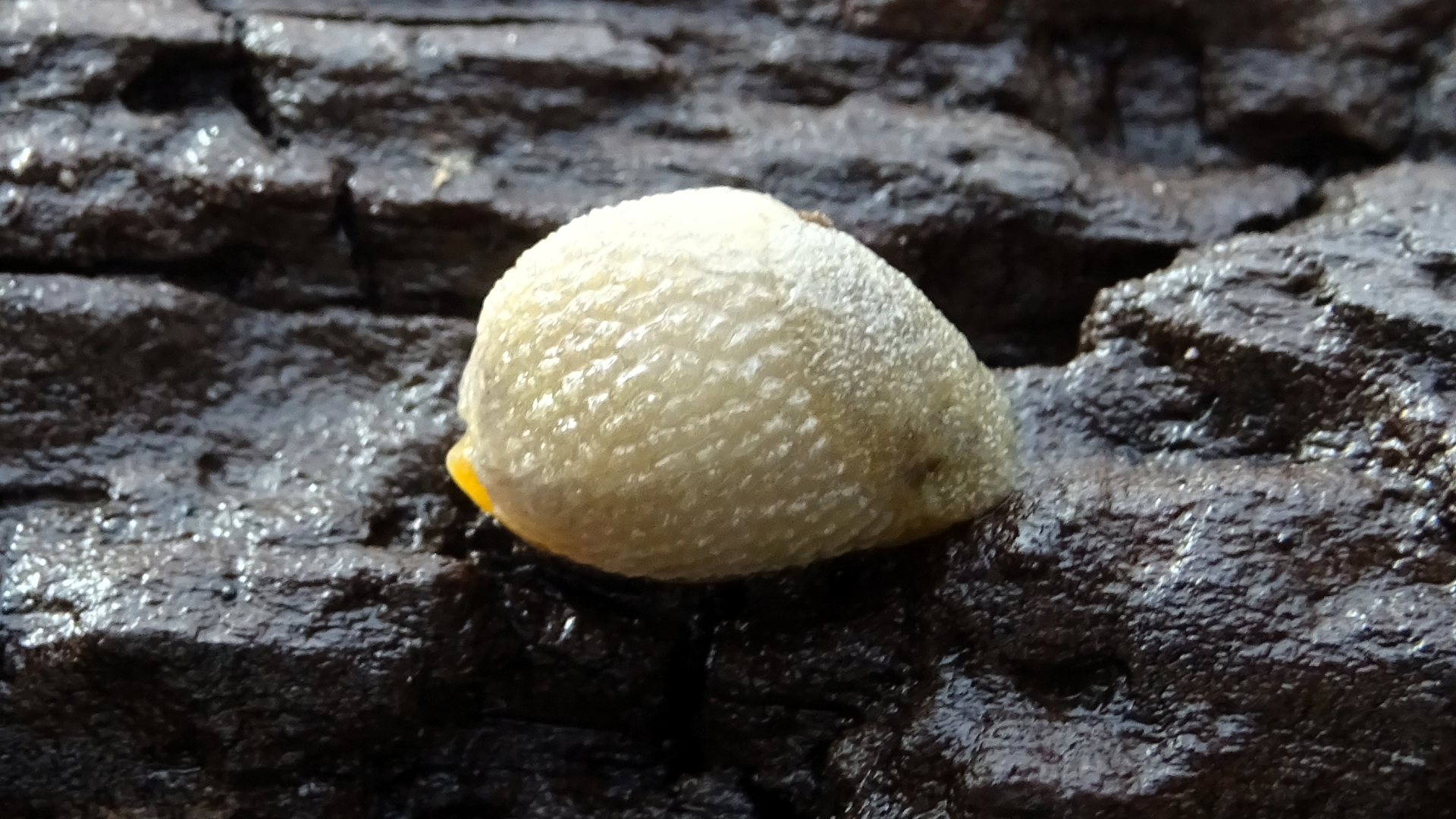
Slide title
Hedgehog Slug Arion intermedius
©Raymond Small TQ4893 25/02/2020
Button
Hedgehog Slug
Arion intermedius (1.5-2cm long) varies in colour and patterning. It may be white, grey or orange. The tentacles are grey and the sole is yellow or orange. When stimulated it becomes very compact and the body becomes roundish similar in shape to a hedgehog, with the tubercles on the dorsal surface somewhat resembling prickles. This species feed on plants and fungi in grassland and forests.
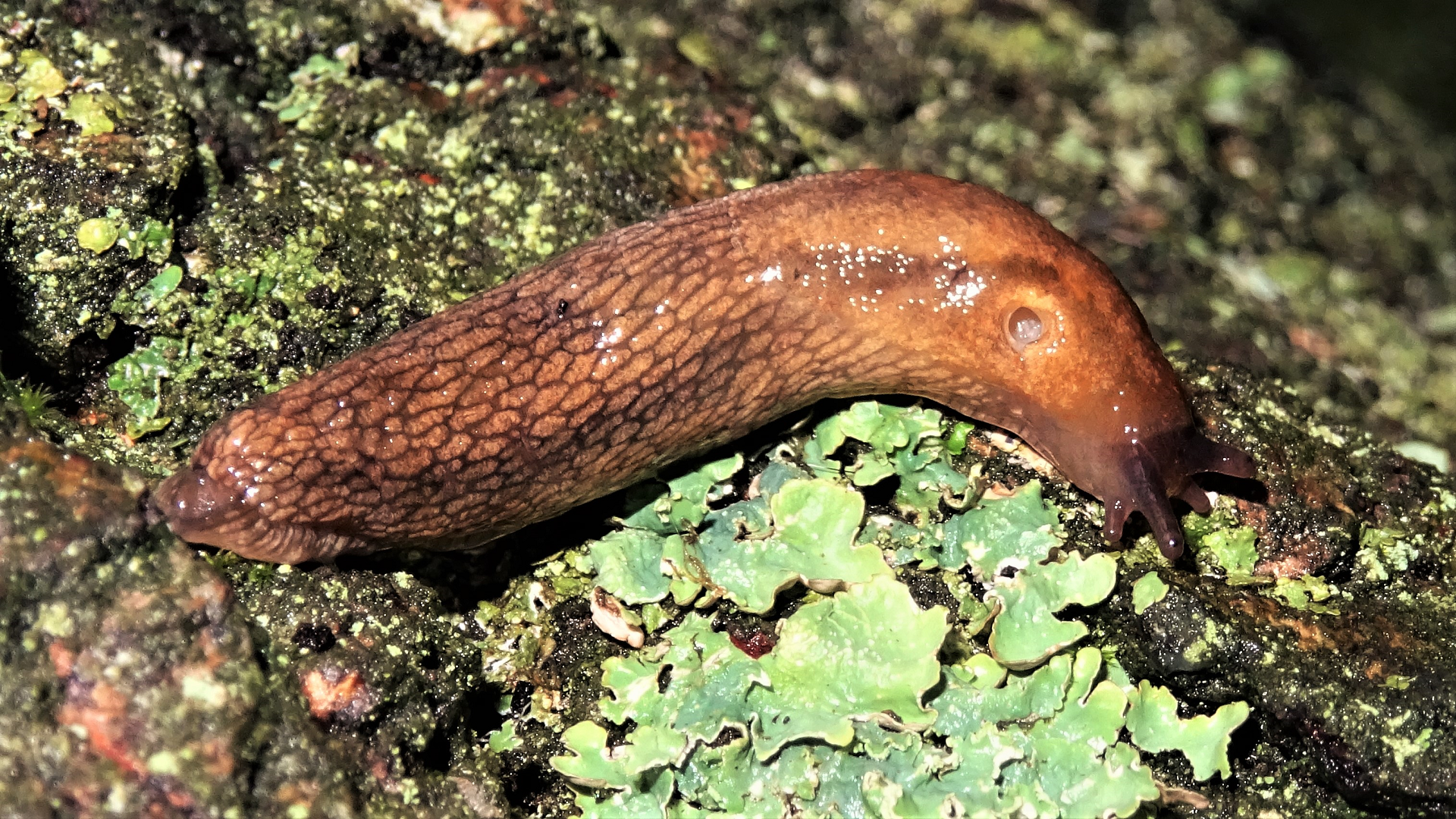
Slide title
Dusky Slug Arion subfuscus
©Raymond Small TQ4792 05/10/1921
Button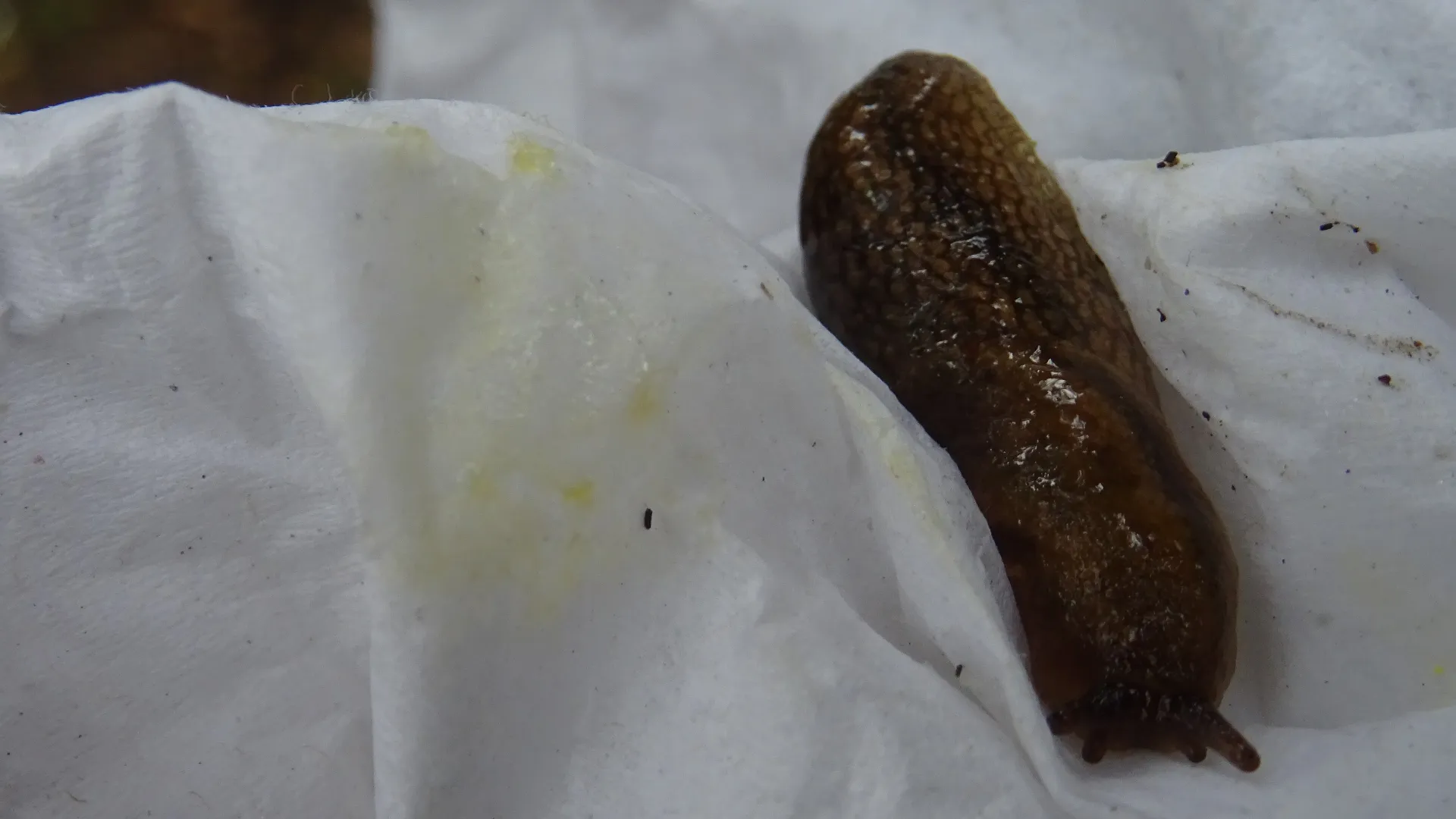
Slide title
Dusky Slug Arion subfuscus
©Raymond Small TQ4792 05/10/1921
Button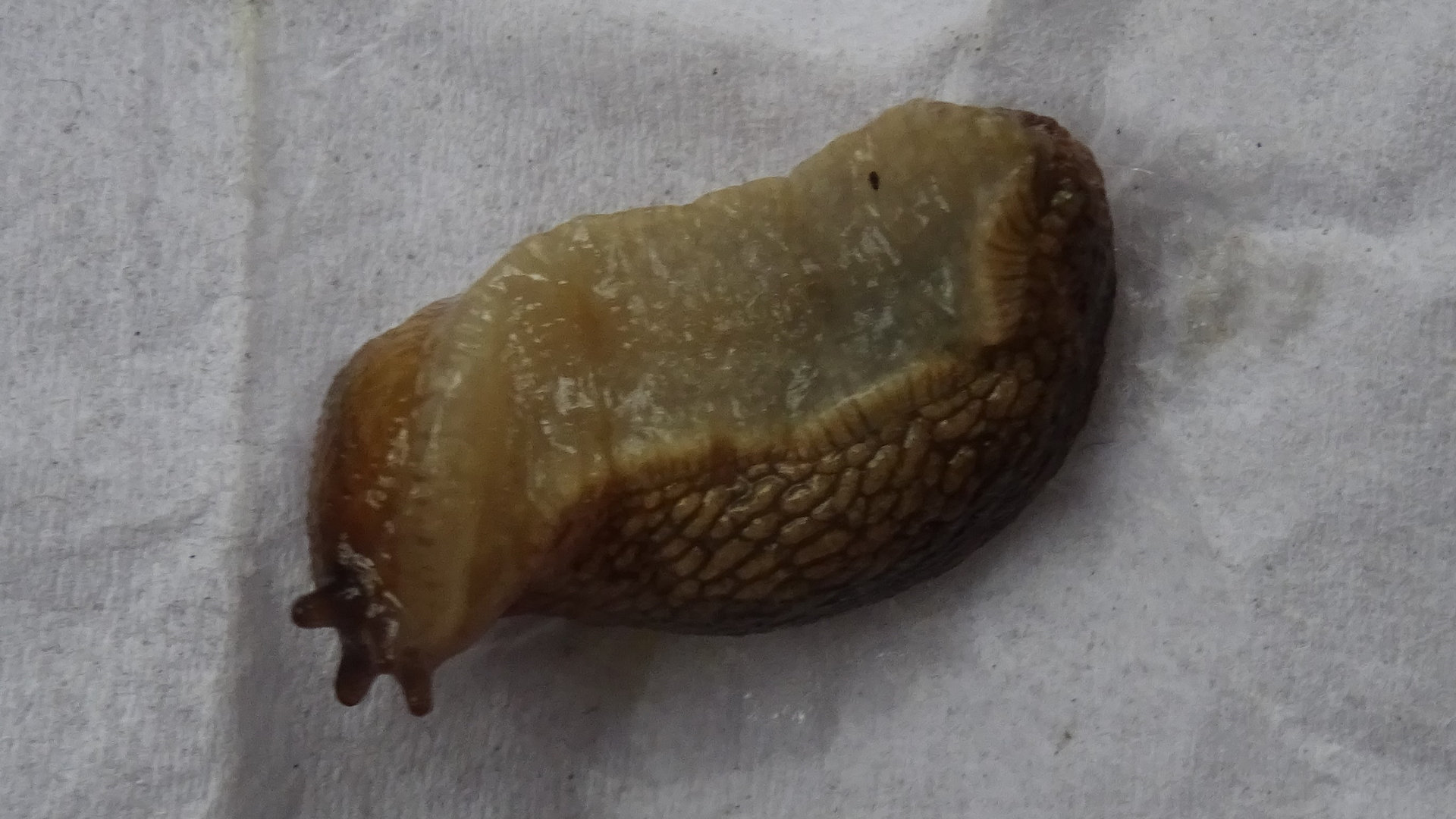
Slide title
Dusky Slug Arion subfuscus
©Raymond Small TQ4792 05/10/1921
Button
Dusky Slug
Arion subfuscus (5–7cm long) appears in various colour forms, such as black-brown, olive-brown and reddish-orange. Darker lateral bands are present. The tentacles can be pale or dark. The foot fringe is light with slender lines and the sole is evenly pale. It has orange-yellow mucus. The body does not contract when stimulated. This species typically lives in moist, cool soil and feeds on animal droppings, dead insects, algae, fungi, fresh and decaying vegetation and fruit.
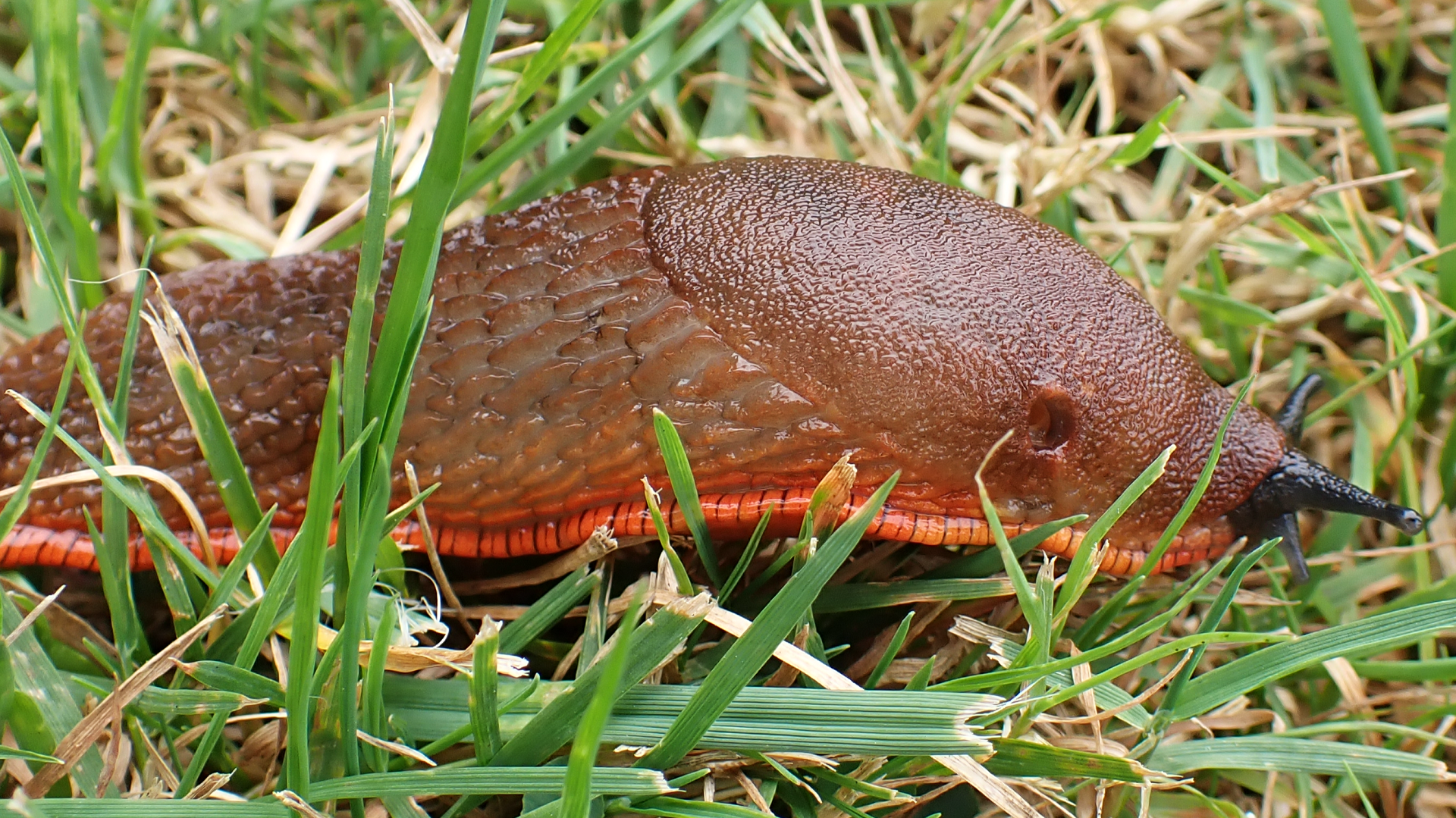
Slide title
Arion ater agg.
©Raymond Small TQ4792 01/10/2023
Button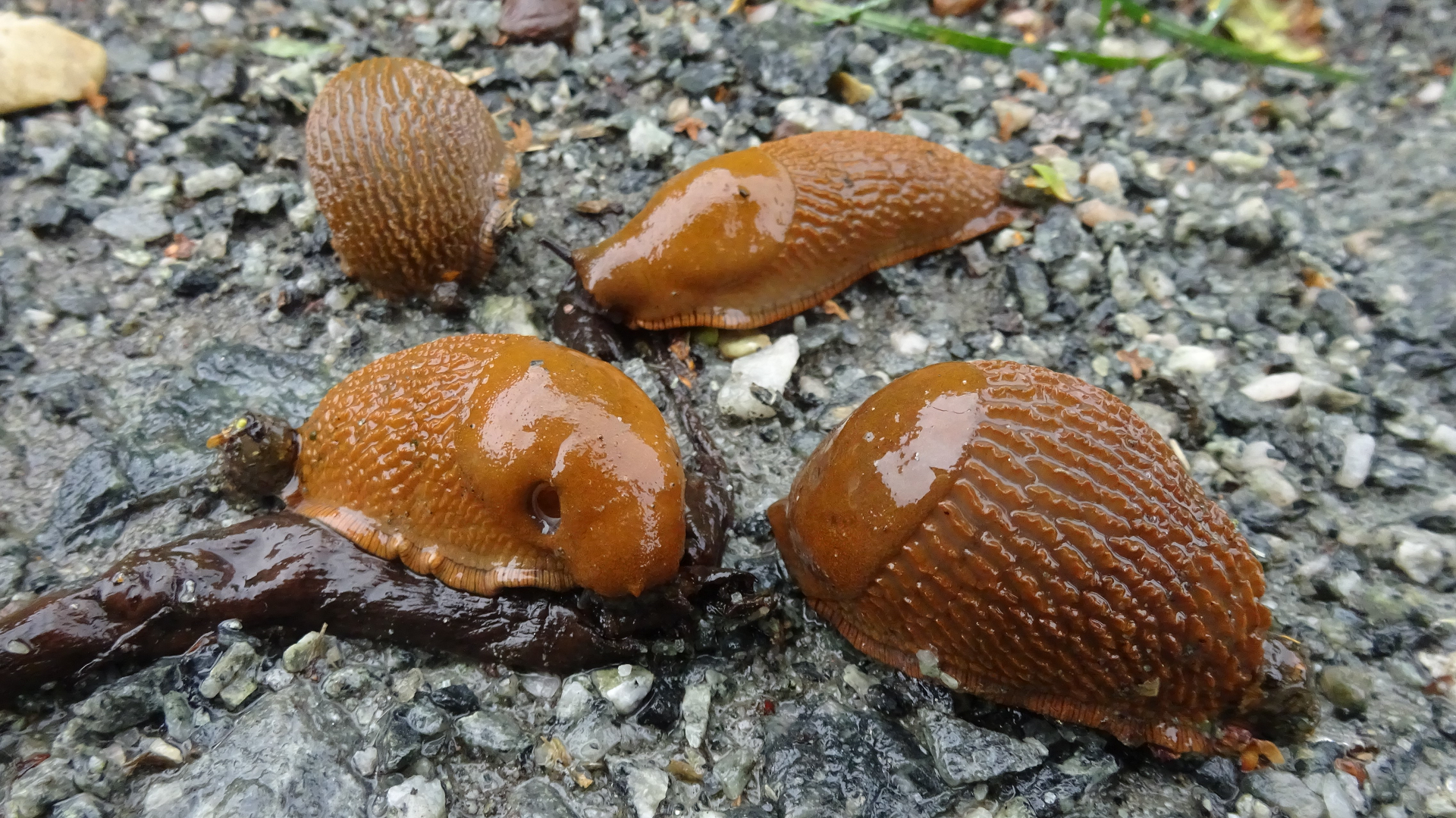
Slide title
Arion ater agg.
©Raymond Small TQ4693 11/08/2017
Button
The Black Slug Arion ater and Red Slug Arion rufus are often treated as the aggregate Arion ater agg. when being recorded. The former is typically deep black, however it may also be brown or white. The latter is rust-brown, but can only be reliably told apart by dissecting the genitalia. These large species (10-15cm) are omnivorous, feeding on living and dead plants, rotting organic debris, fungi, dung, carrion, earthworms and even other slugs. A. rufus will often rock from side to side when irritated which may help distinguish it from A. Ater.
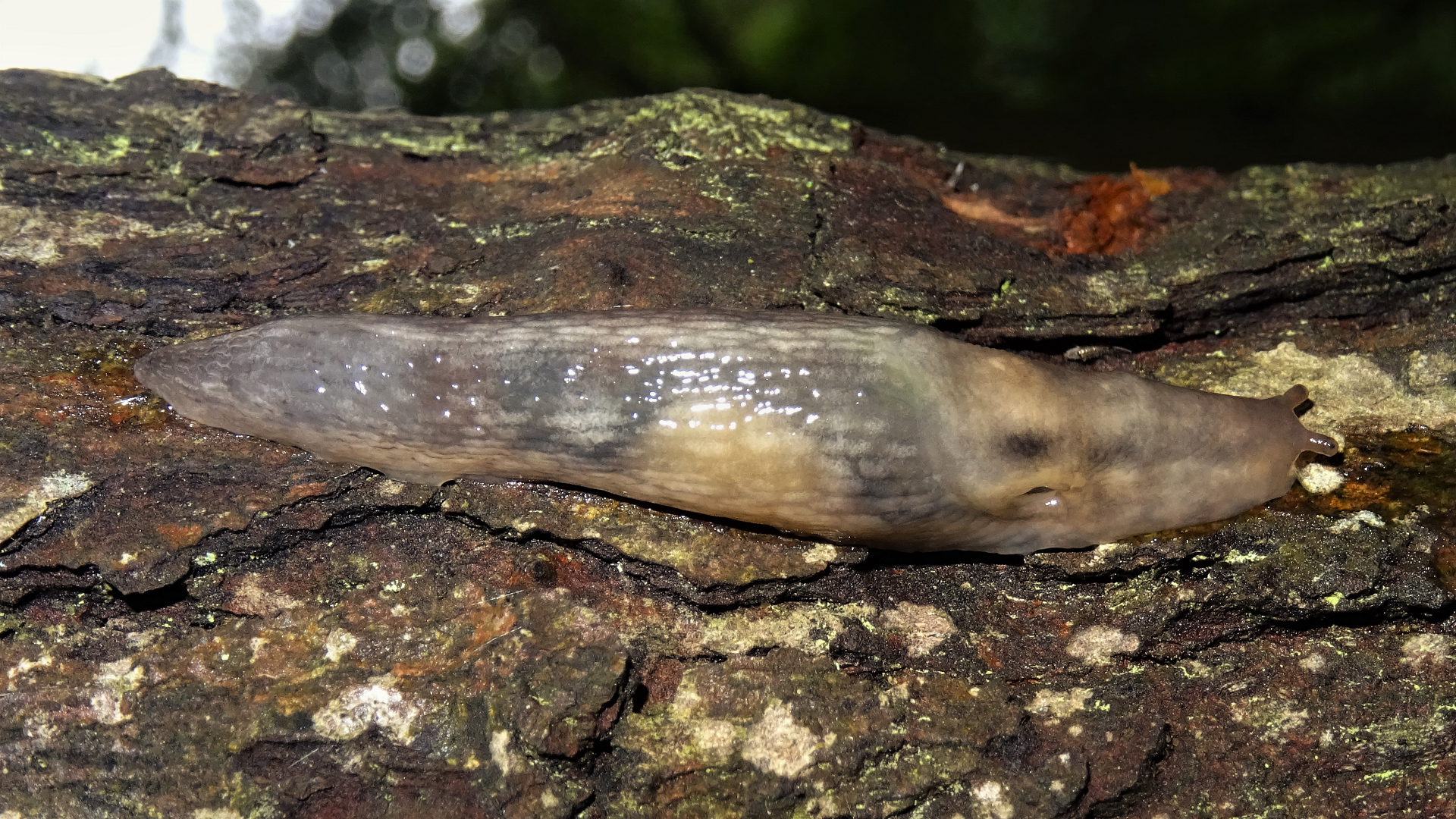
Slide title
Tree Slug Lehmannia marginata
©Raymond Small TQ4792 05/10/2021
Button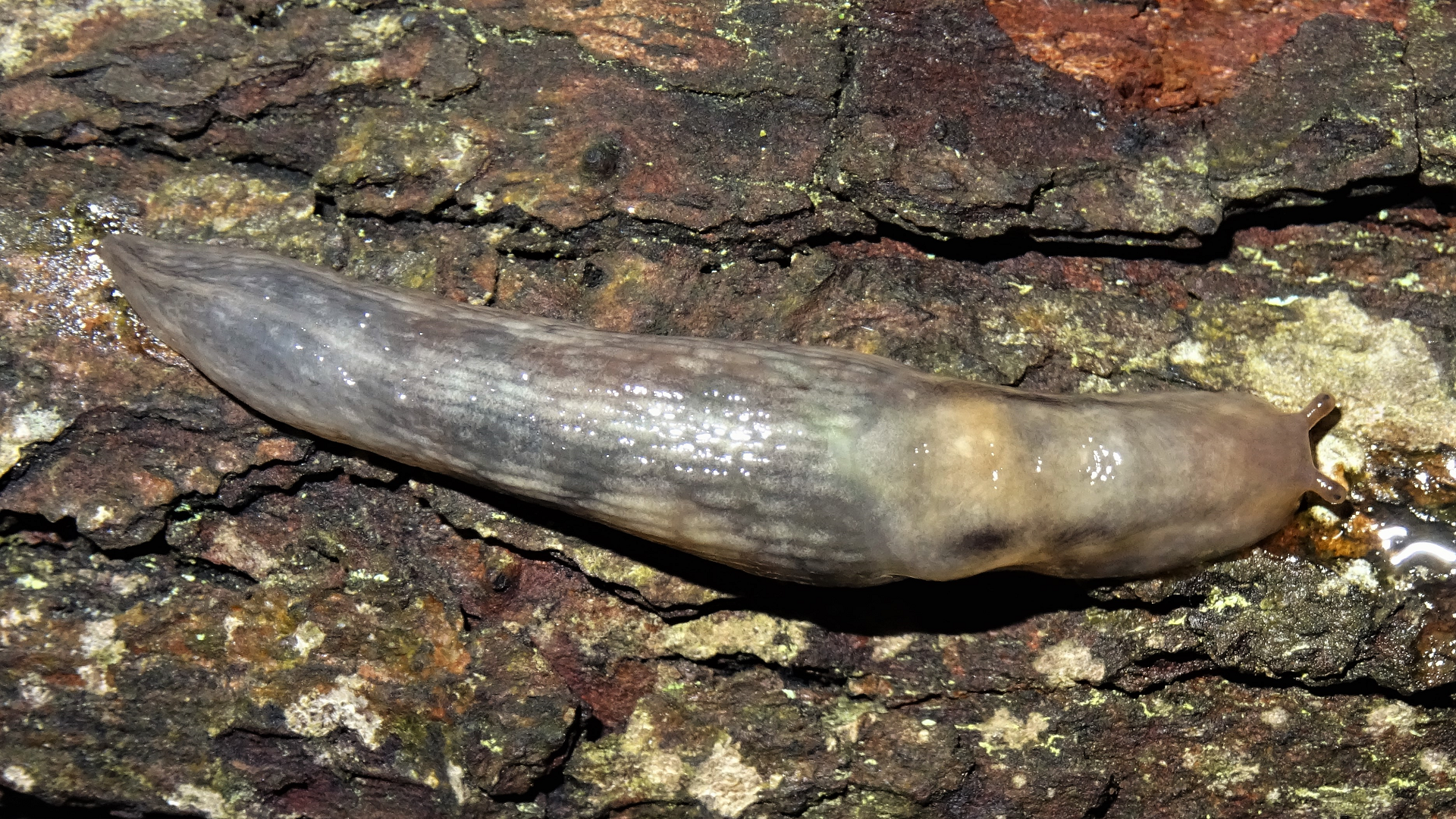
Slide title
Tree Slug Lehmannia marginata
©Raymond Small TQ4792 05/10/2021
Button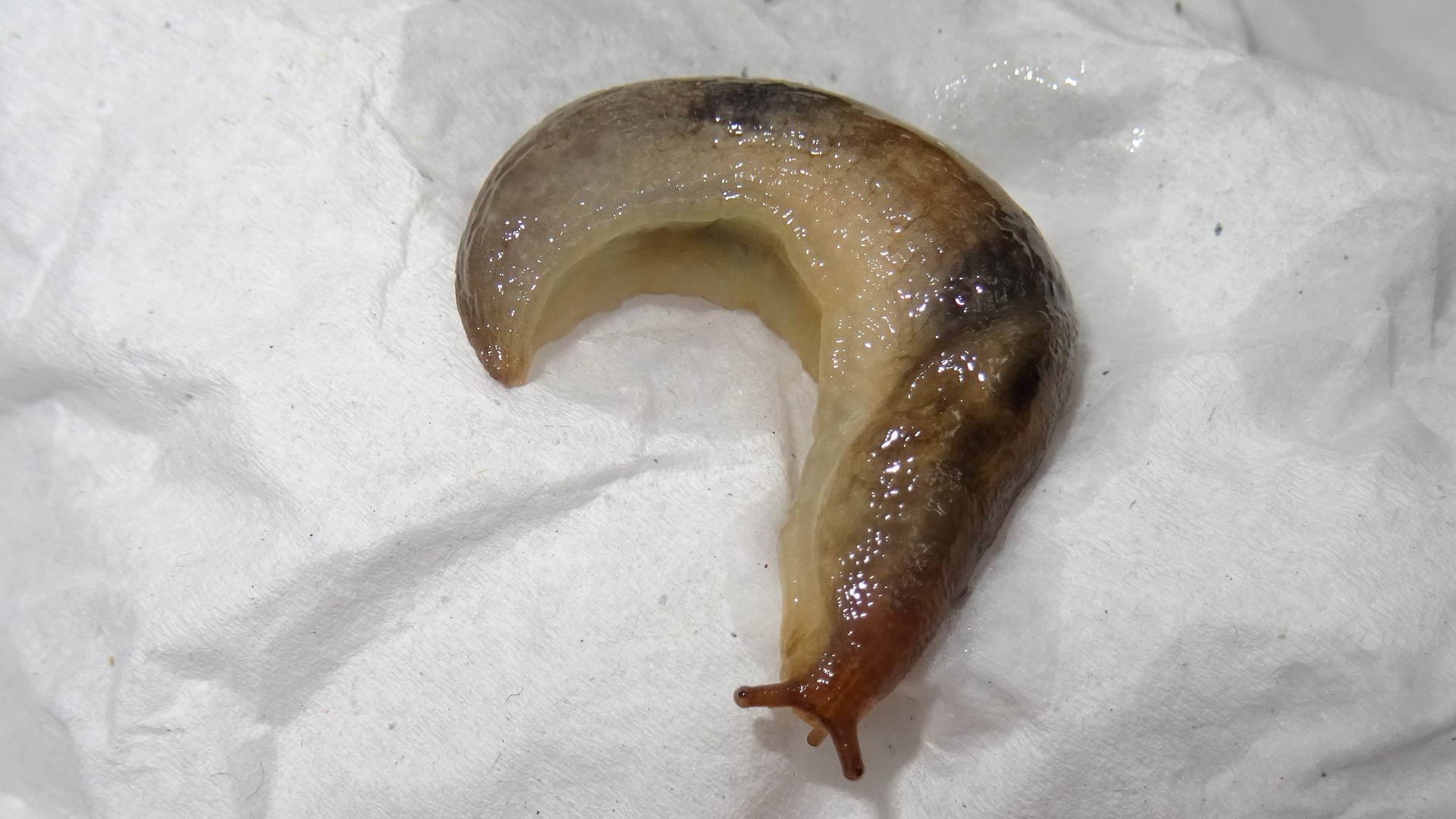
Slide title
Tree Slug Lehmannia marginata
©Raymond Small TQ4792 05/10/2021
Button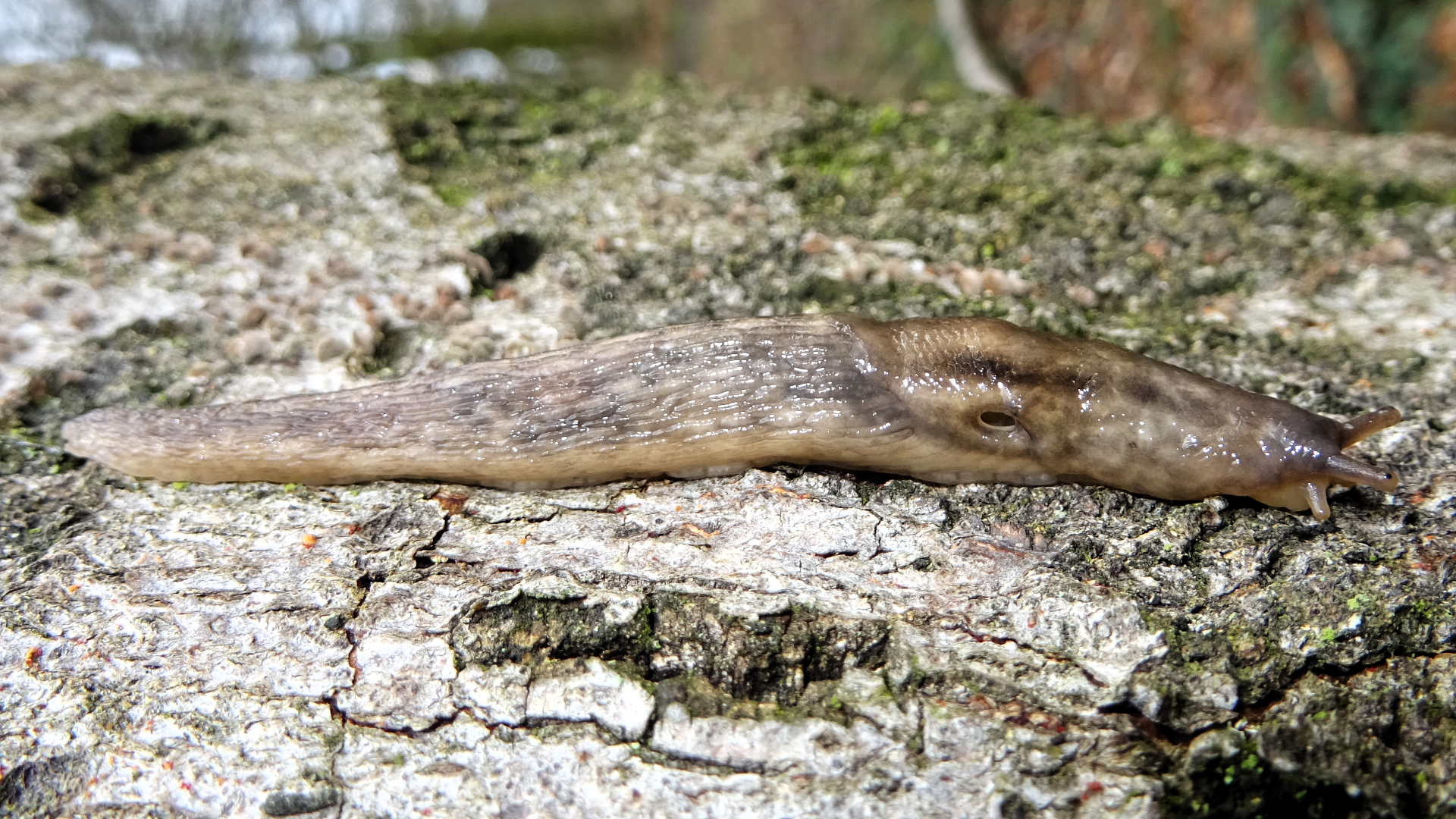
Slide title
Tree Slug Lehmannia marginata
©Raymond Small TQ4792 12/01/2020
Button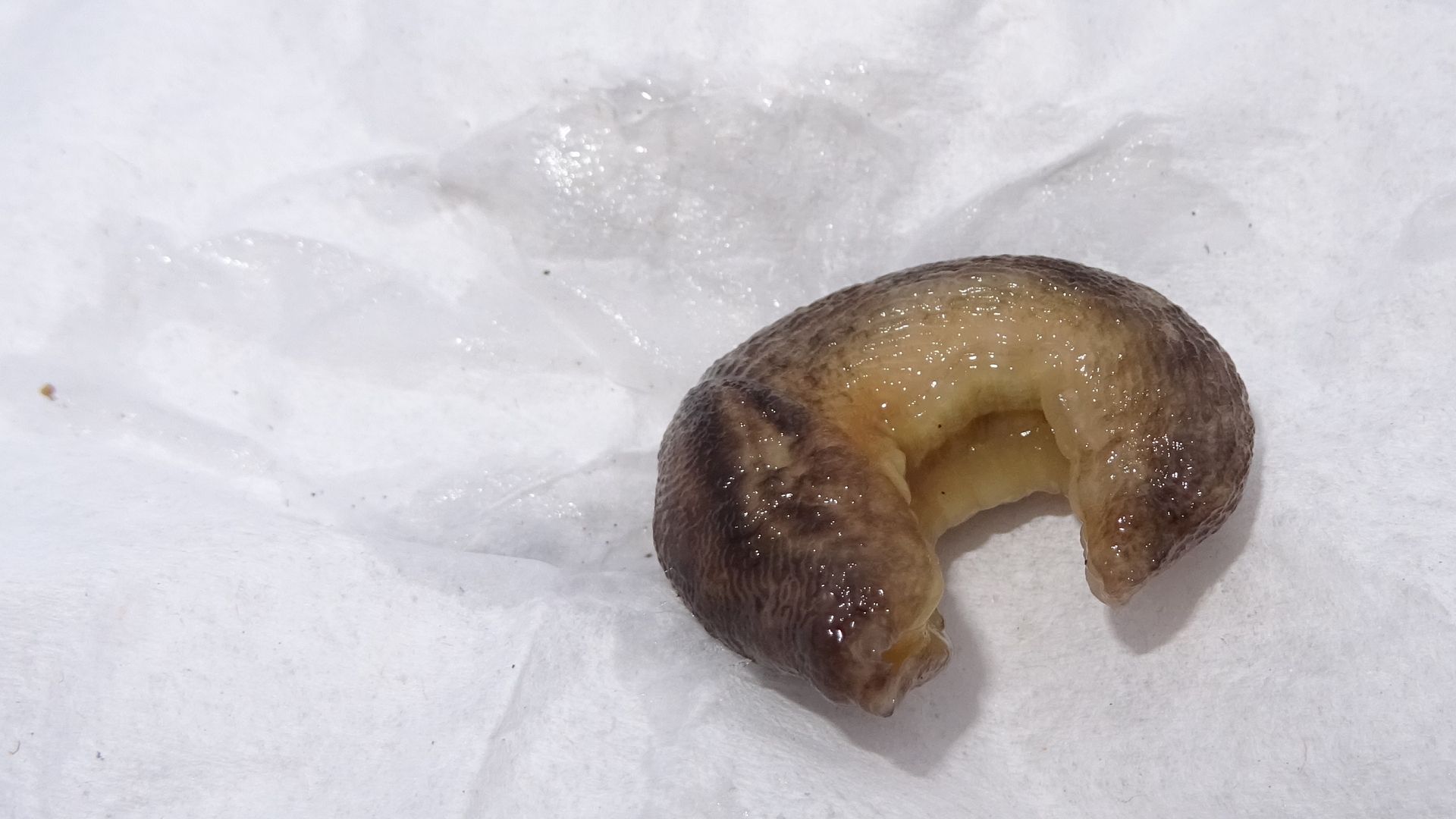
Slide title
Tree Slug Lehmannia marginata
©Raymond Small TQ4792 12/01/2020
Button
Tree Slug Lehmannia marginata is often found climbing tree trunks. It is a medium-sized species (up to 12cm) with a nearly transparent body which is fairly long and narrow with a marked keel. The keel looks paler than the remaining body against the darker innards. This species secretes a clear mucus.
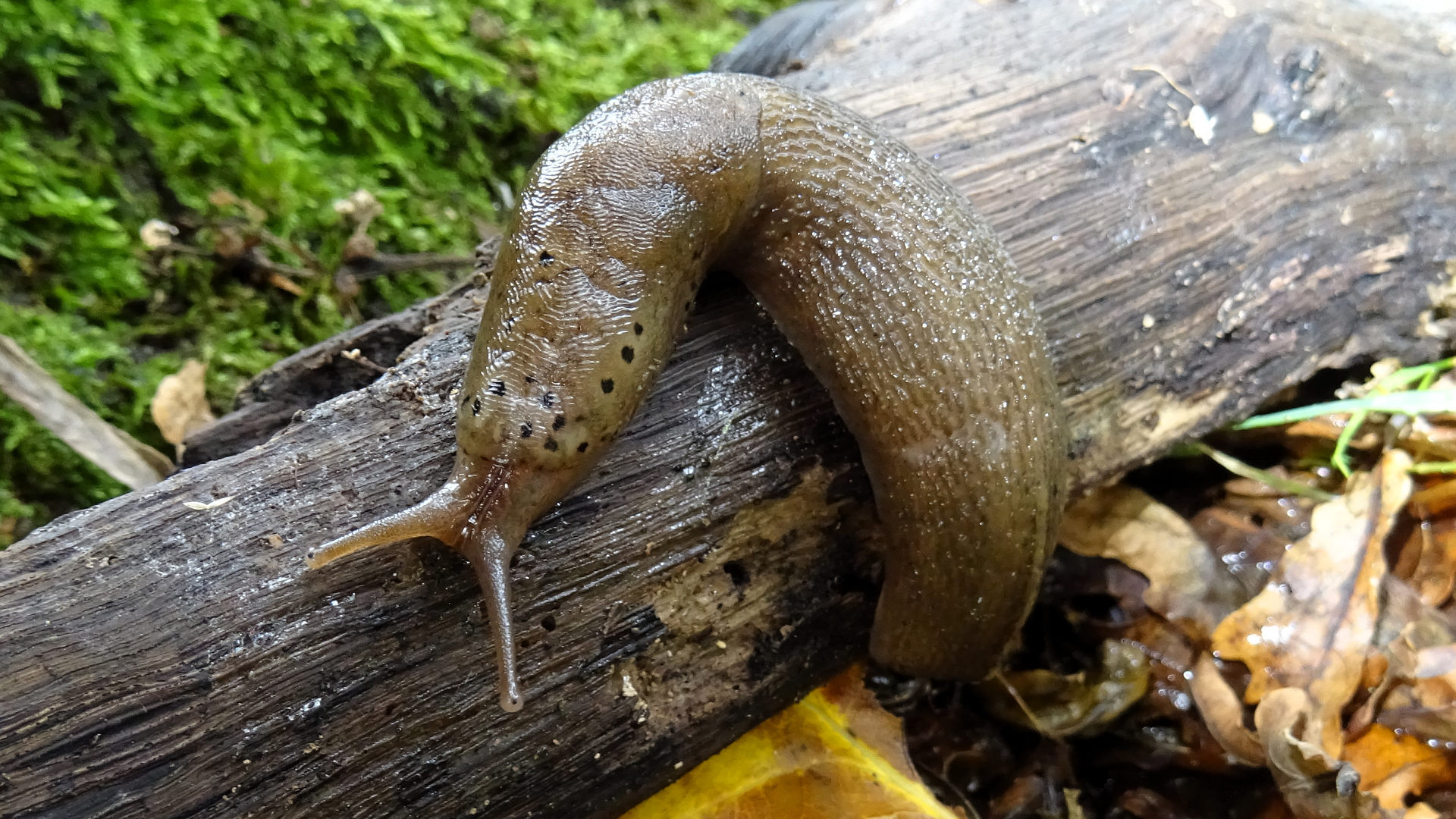
Slide title
Leopard Slug Limax maximus
©Raymond Small TQ4892 27/09/2021
Button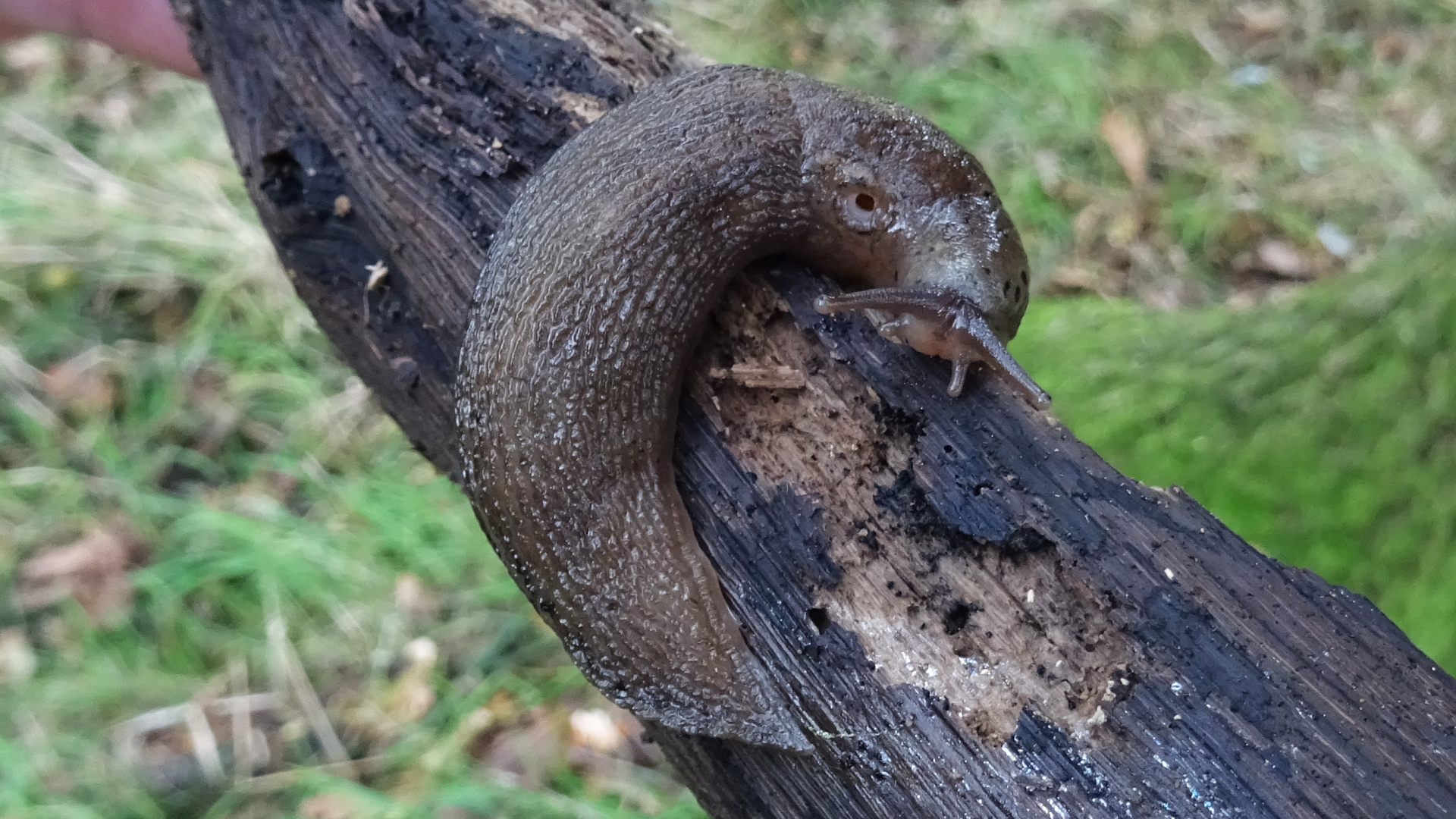
Slide title
Leopard Slug Limax maximus
©Raymond Small TQ4892 27/09/2021
Button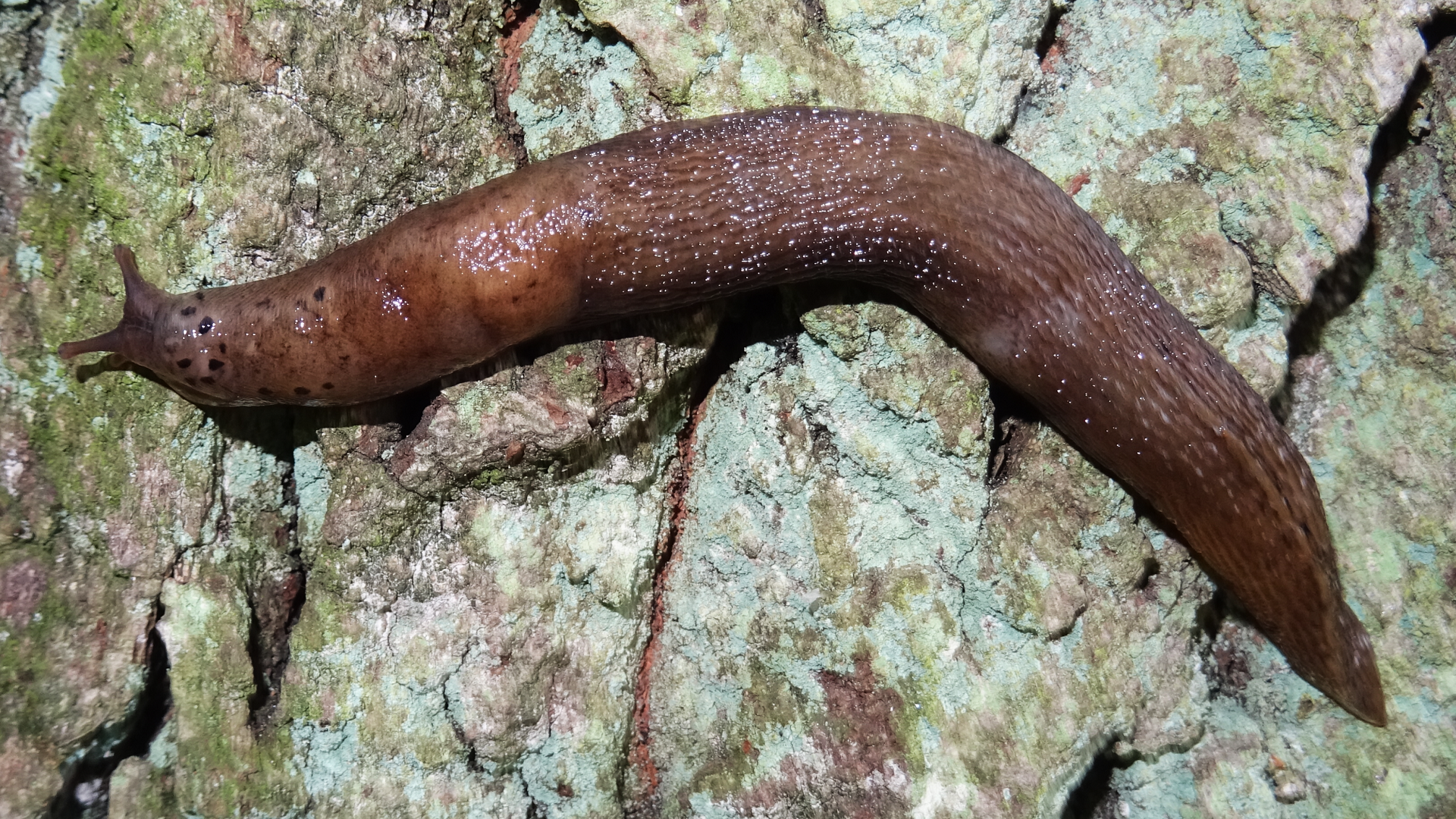
Slide title
Leopard Slug Limax maximus
©Raymond Small TQ4892 27/09/2021
Button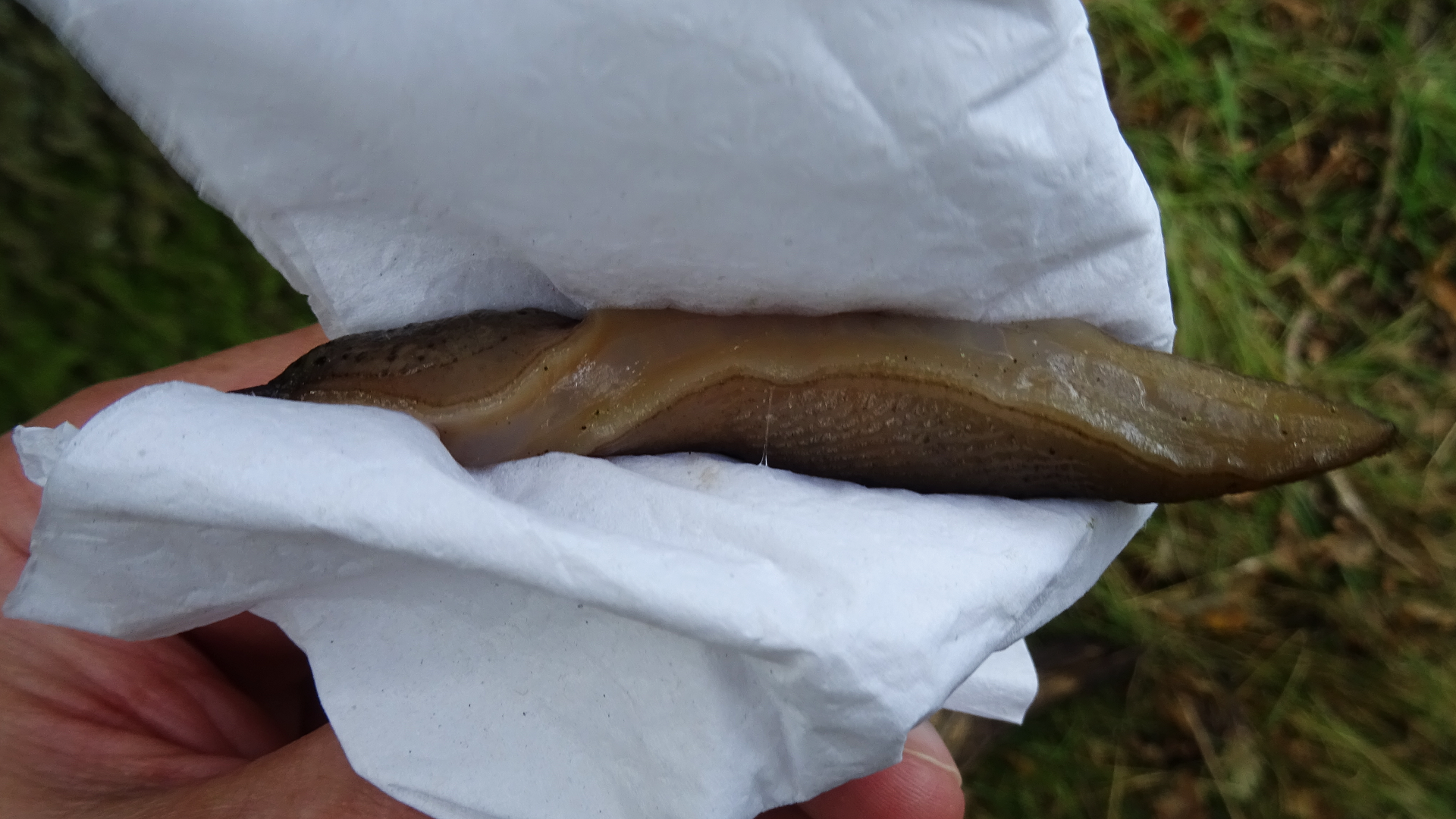
Slide title
Leopard Slug Limax maximus
©Raymond Small TQ4892 27/09/2021
Button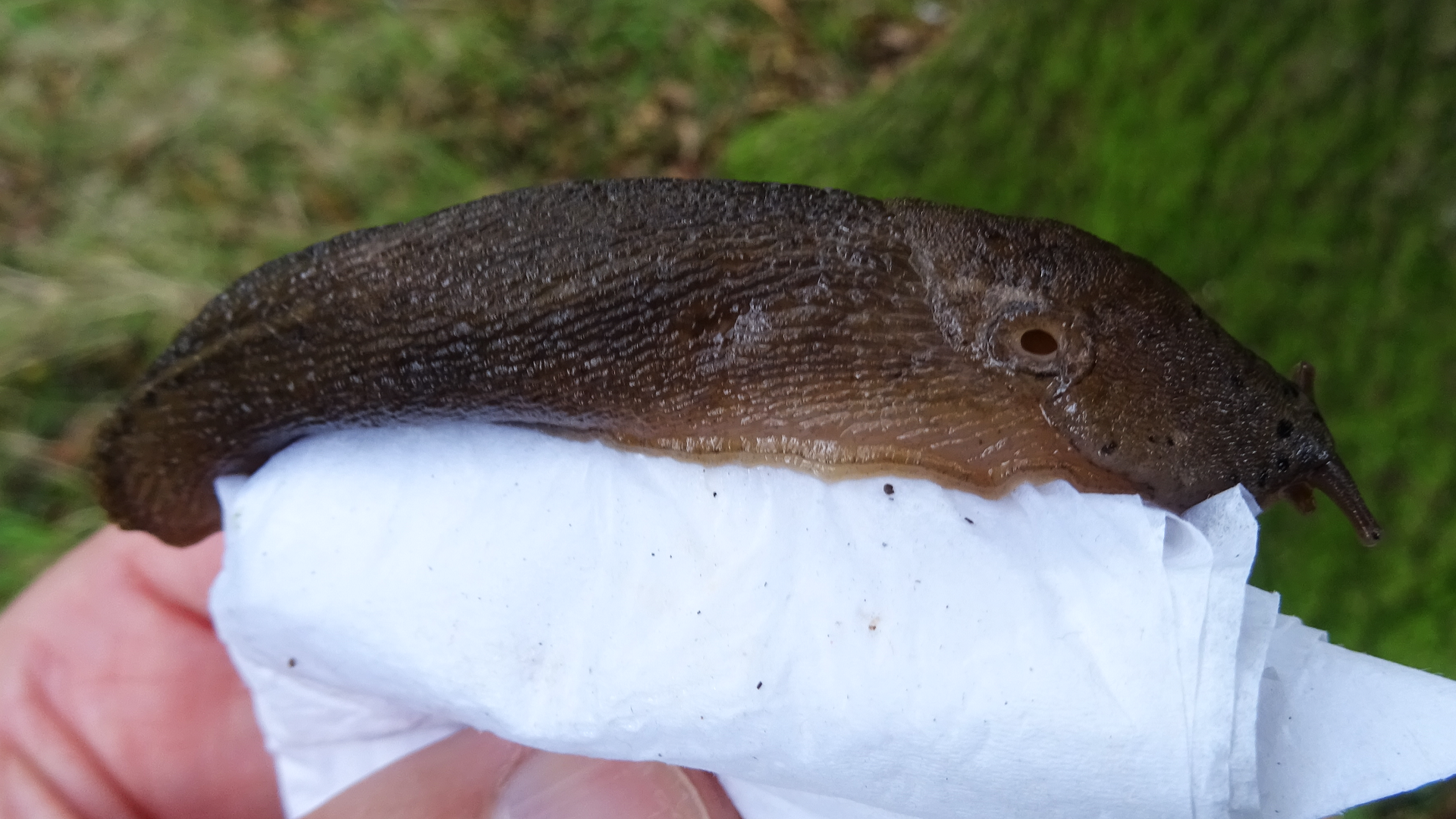
Slide title
Leopard Slug Limax maximus
©Raymond Small TQ4892 27/09/2021
Button
Leopard Slug
Limax maximus is a large species (10–20 cm) and is usually light grey or grey-brown.
The body is longitudinally streaked or spotted with black, however some specimens are sparsely marked. The shield is always black-spotted and the sole of the foot is ash or yellowish.The foot-fringe is light with a row of tiny submarginal blackish tubercles. This species secretes a clear, non-sticky mucus. They mate in an unusual manner, hanging intertwined in the air held by a thick thread of mucus. Leopard Slugs are omnivorous eating a variety of foods including fungi, carrion, and fresh and decaying plants. Also known as the
Great Grey Slug.
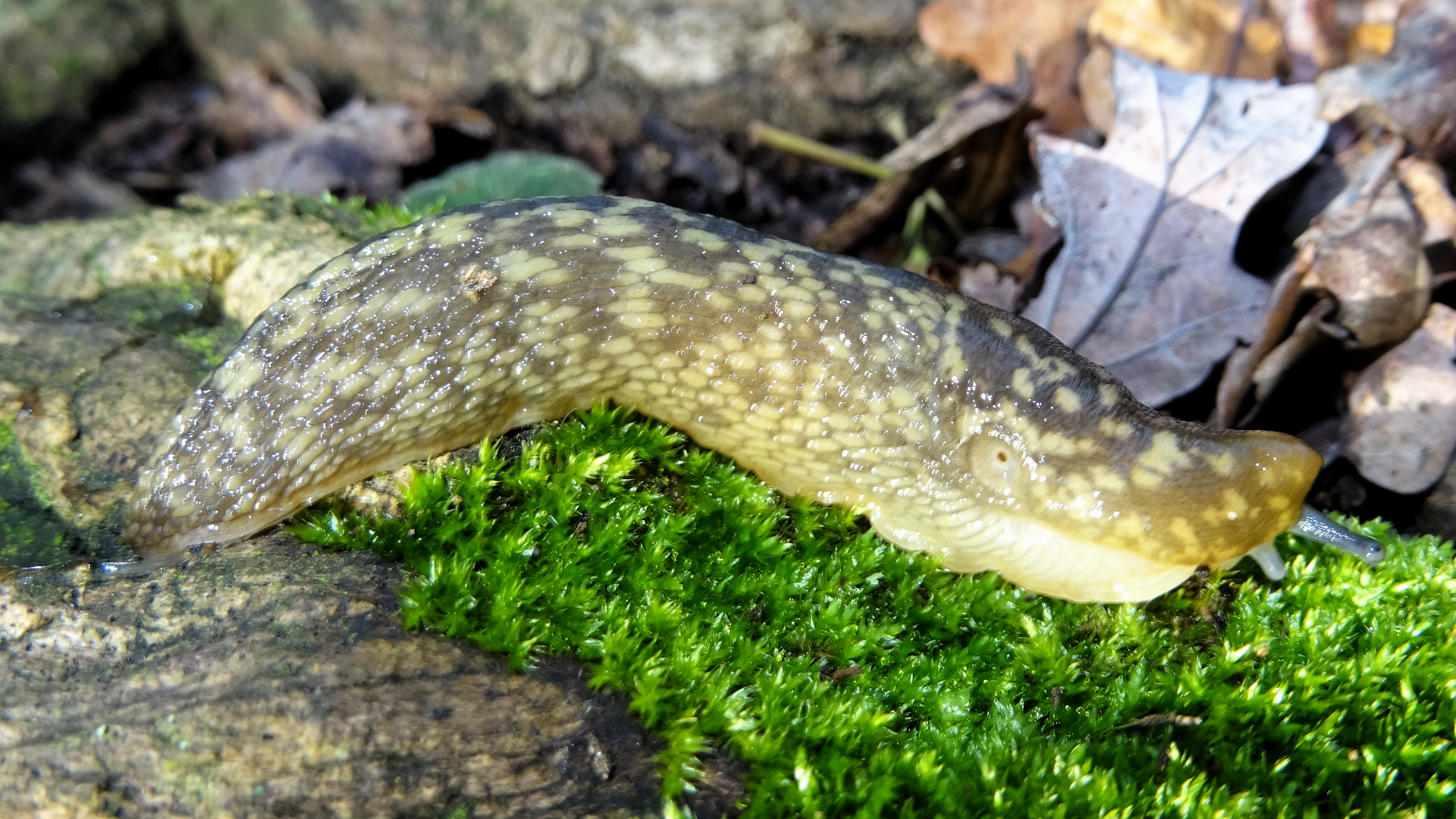
Slide title
Green Cellar Slug Limacus maculatus
©Raymond Small TQ4791 29/01/2020
Button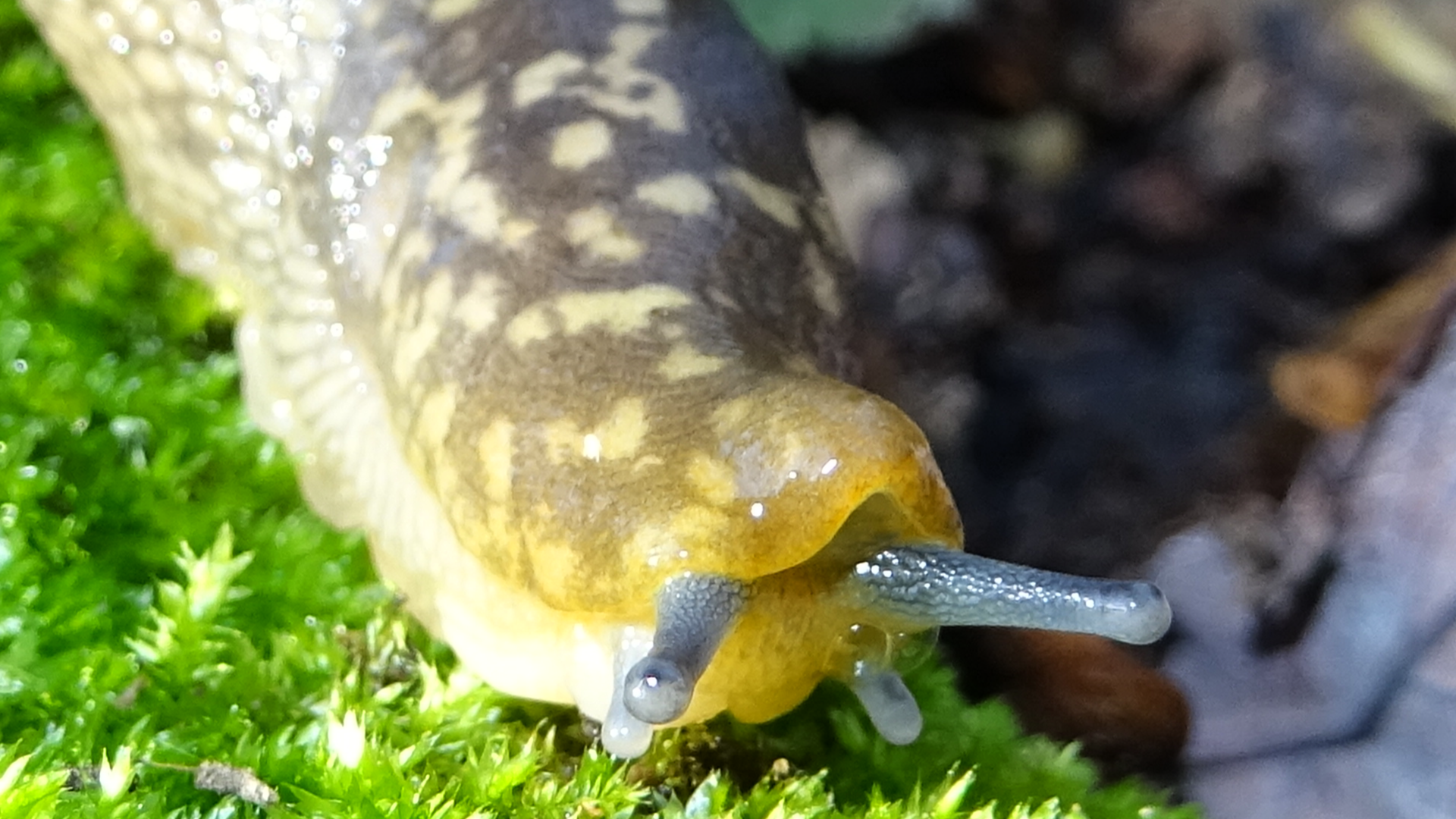
Slide title
Green Cellar Slug Limacus maculatus
©Raymond Small TQ4791 29/01/2020
Button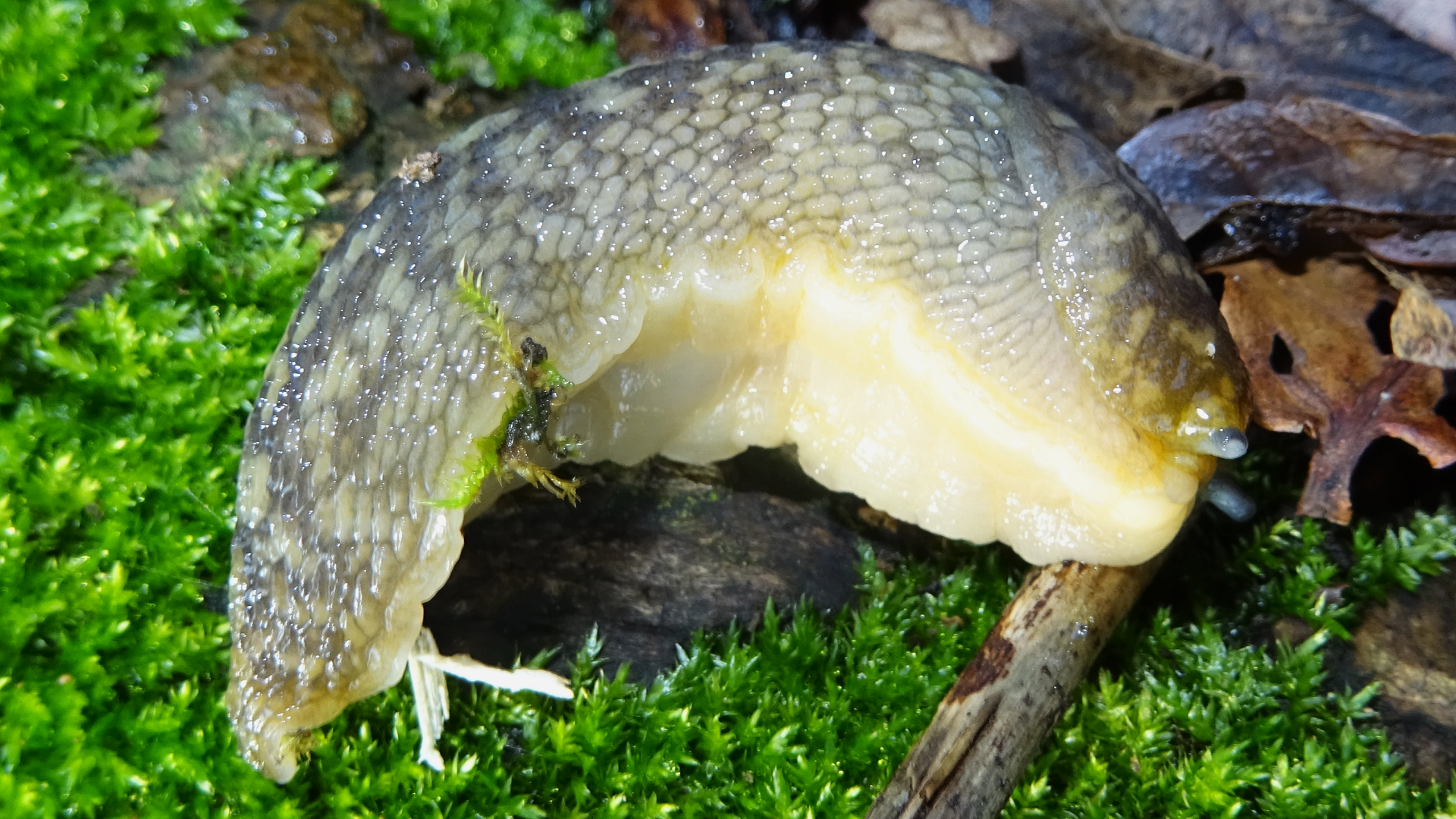
Slide title
Green Cellar Slug Limacus maculatus
©Raymond Small TQ4791 29/01/2020
Button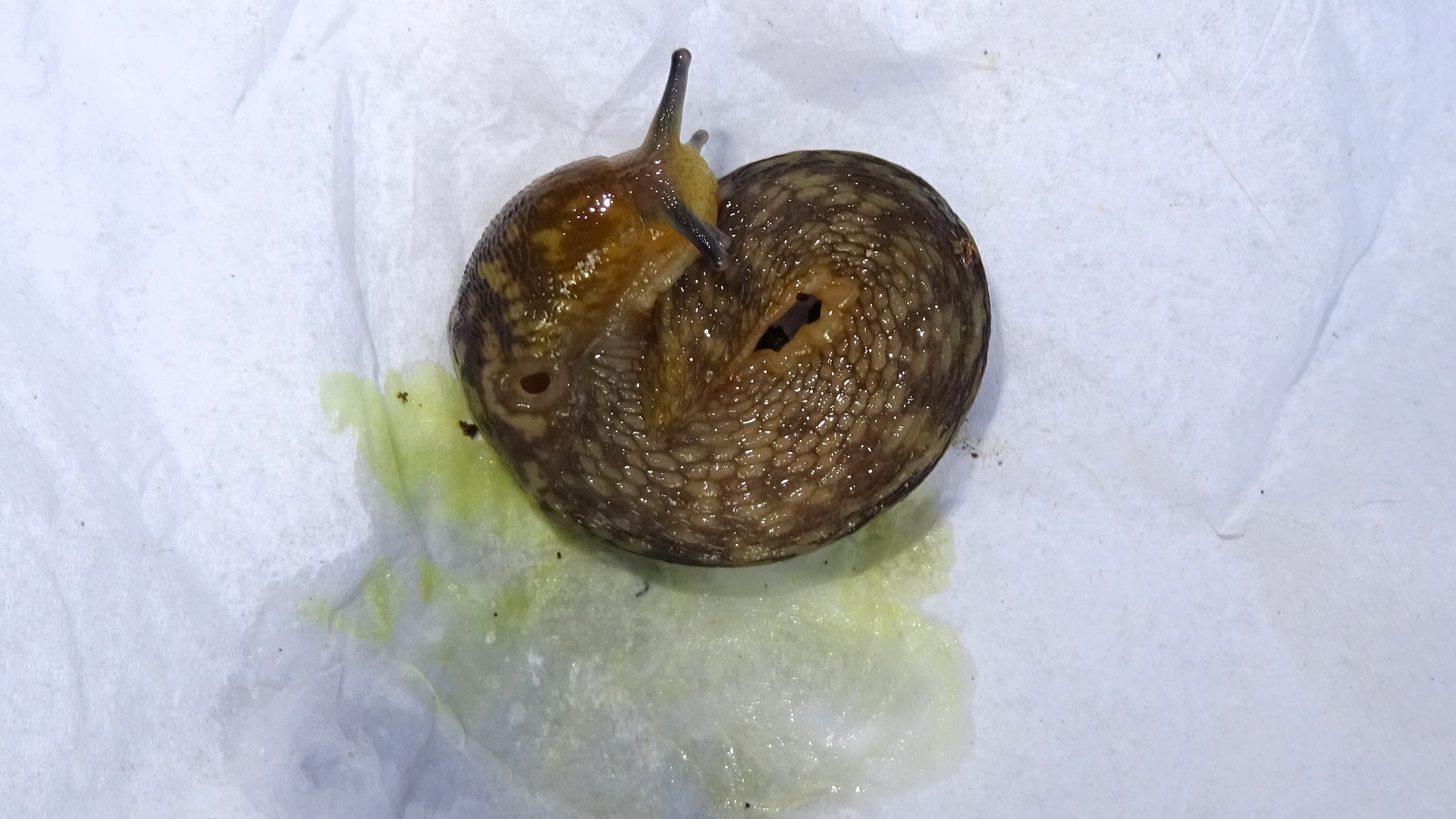
Slide title
Green Cellar Slug Limacus maculatus
©Raymond Small TQ4791 29/01/2020
Button
Green Cellar Slug Limacus maculatus
originates from the Caucasus and Black Sea Coast and has now spread across Europe. It is also known as the
Irish Yellow Slug. This species feeds on decaying plant material and is not considered a pest because it does not feed on live plants. It is similar in appearance to Yellow Cellar Slug
Limacus flavus, however that species seems to be in decline. Both species produce clear yellow slime. The Yellow Cellar Slug has a long yellow stripe running along the centre of the tail that is absent on the Green Cellar Slug.
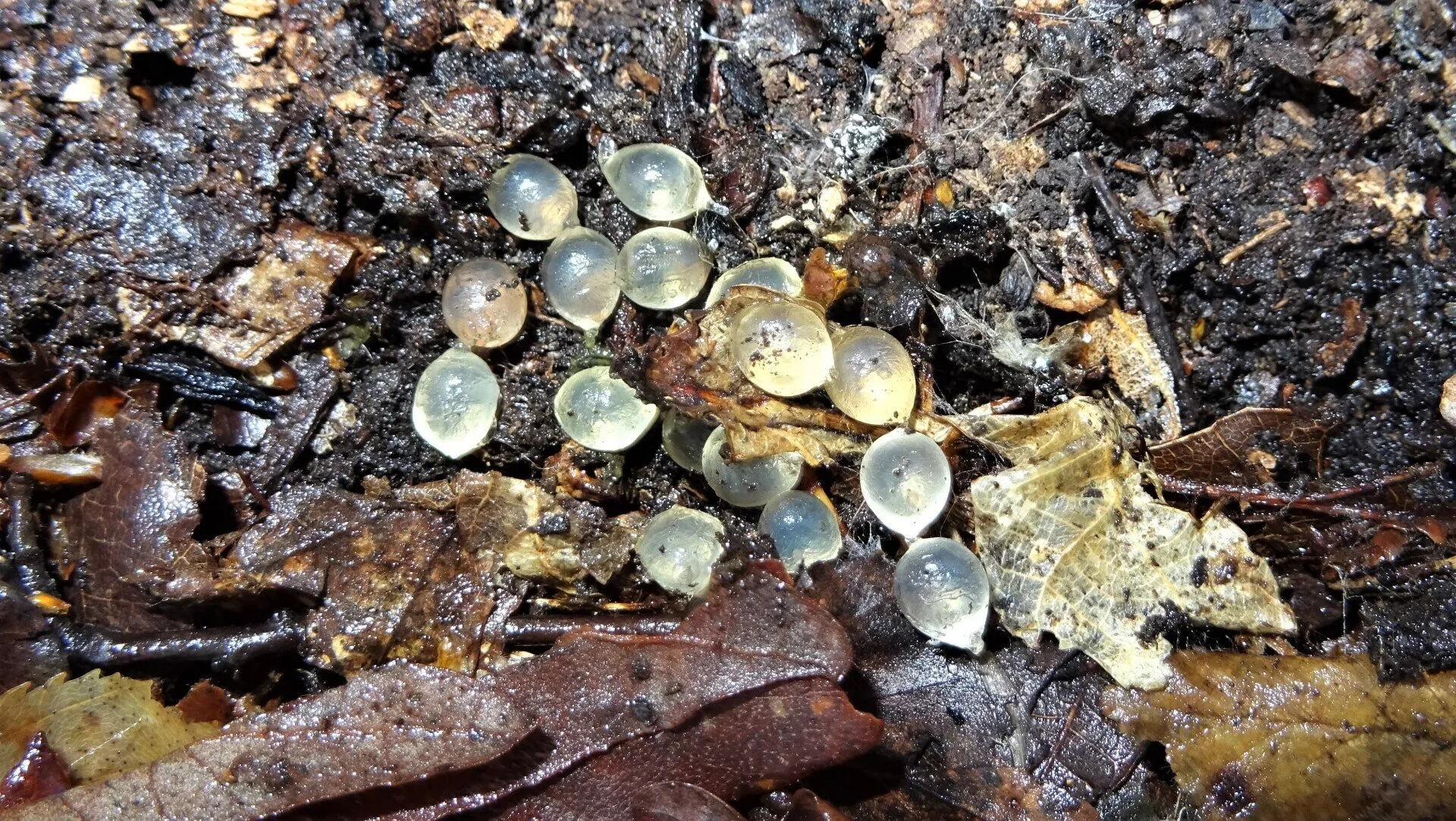
Slide title
Slug Eggs Limacus sp.
©Raymond Small TQ4792 19/12/2018
Button
Limacus species lay lemon-shaped eggs strung together like a necklace. They can often found under logs.
Do you know? A group of slugs can be called a rout, a walk, or a cornucopia.
© hainaultforest.net. All rights reserved.